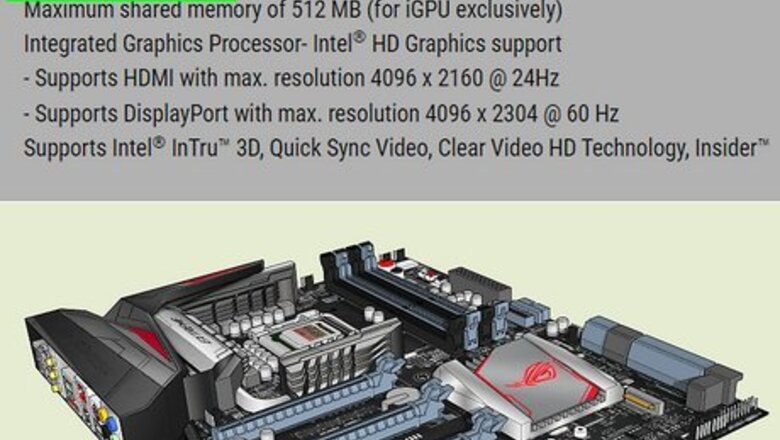
views
- Not every computer or laptop can have more than one monitor, so make sure your motherboard will support a dual-monitor setup.
- Use an HDMI, VGA, DVI, Display Port, or Thunderbolt cable to connect to another monitor.
- Go to your computer's "Settings > Display" to set up the external monitor.
Connecting the Second Monitor
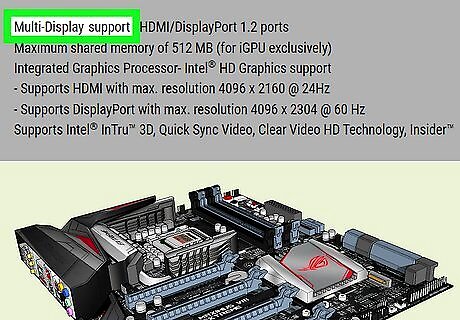
Determine whether your motherboard supports dual monitors. Virtually all modern computers' motherboards support multiple monitors, but older machines may not. While some computers may support at least one additional monitor, they may limit how many monitors you can have connected at once. You can check your motherboard for dual monitor support by doing the following: Find your motherboard's name. Look up your motherboard's name in a search engine (e.g., Google). Select a search result that lists your motherboard's features. Look for a "Multi-Display," "Multi-Monitor," or "Dual Display" feature.
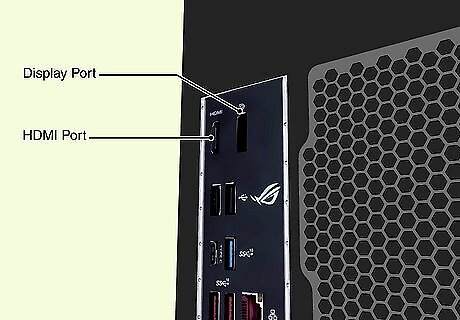
Determine your computer's video connection type. Most newer computer graphics cards have at least two video-out ports that allow you to connect multiple monitors. These are usually connected to the graphics card on the back of the computer case. Many laptops have an HDMI port or DisplayPort on them. These may be on the side or back of the laptop. If your computer does not have a dedicated video-out port for a second monitor, check if it has a USB-C/Thunderbolt or USB 3.0 port. The following is a description of the different video connection types. HDMI: HDMI ports are small and thin, rectangular-shaped ports with the bottom corners rounded inward. Some smaller laptops may use a mini-HDMI or micro-HDMI connection. These ports are about the same shape as a regular HDMI cable but much smaller. HDMI is the standard for most newer monitors. It is used on most computer monitors and televisions. HDMI supports up to 4K resolution and high dynamic range color (HDR). While HDMI is the standard, there are different kinds. HDMI 1.4 can support 4K at 30 frames-per-second (fps) or HD (1080p) at 120 frames-per-second. HDMI 2.0 can support 4K at 60 frames per second. HDMI 2.1 can support up to 10k and 4K at 120 frames-per-second and higher resolutions. DisplayPort: DisplayPort output ports are thin and rectangular-shaped with the bottom-right corner cut. Some laptops may use a mini-DisplayPort connection, which is the same shape as a DisplayPort but smaller. DisplayPort is a newer display connection mostly used with computer monitors rather than televisions. DisplayPort supports AMD's FreeSync and Nvidia's G-Sync. DisplayPort 1.2 can support 4K at 60 frames per second. DisplayPort 1.3 can support 4K at 120 frames per second. DisplayPort 1.4 can support 8K at 60 frames-per-second and HDR. DisplayPort 2.0 supports up to 16K at 60 frames per second. A DisplayPort connection can support multiple monitors connected from a single DisplayPort connection. USB-C/Thunderbolt 3: A USB-C port has a small, pill-shaped port. Thunderbolt 3 ports have the same shape as a USB-C port and support a USB-C connection, but they will generally have an icon that resembles a lightning bolt next to them. USB 3.0 ports generally have a USB Type-A port, which is rectangular-shaped. You can connect a USB 3.0 port to an HD monitor using a USB-to-HDMI adapter. USB-C outputs can connect to a monitor and display up to 4K at 60 frames per second. Thunderbolt 3 connections support even higher display resolutions. However, not all monitors have a USB-C connection. If the monitor does not have a USB-C connection, you can connect it to a computer using a USB-C-to-HDMI or USB-C-to-DisplayPort adapter. VGA: VGA ports are usually blue and rectangular with 15 holes. They usually have screw holes on the side used to secure the VGA cable. VGA is used on old computers. Most newer monitors do not support a VGA connection. However, you can connect a VGA to a newer monitor using an HDMI-to-VGA adapter. DVI: DVI ports are usually white with 24 holes. They also have a slot with four additional holes to the right. Like VGA ports, they often have screw holes on the sides to secure the DVI cable. DVI is another legacy video connection mostly used on older computers and monitors. It supports a higher resolution than VGA, but it does not support modern HD or 4K displays. Like VGA, most newer monitors do not support DVI, but you can connect a DVI connection to a newer monitor using a DVI-to-HDMI adapter.

Check the second monitor's connection type. Your second monitor should have at least one of the previously mentioned connection types. If the monitor's connection differs from your computer's, you may need to purchase an adapter to connect the cable to your monitor. For example, if your computer has a DVI connection and your monitor uses an HDMI connection, you will need to use a DVI-to-HDMI adapter. Likewise, if you need a USB-C cable to connect a monitor, but the monitor does not have a USB-C input, you will need to get a USB-C-to-HDMI or USB-C-to-DisplayPort adapter. Some monitors may have a different port type than what your computer has. Make sure the cable you purchase has connectors that match the ports on the computer and monitor. For example, if your computer has a mini-HDMI port and your monitor has a regular HDMI port, you will need to get a mini-HDMI-to-HDMI cable.
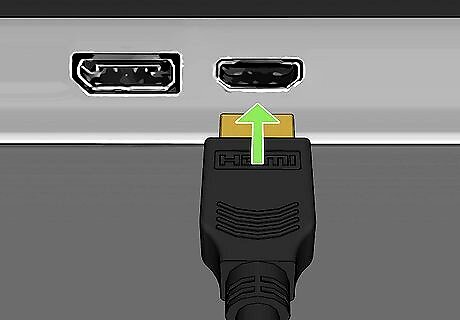
Connect a second monitor to the computer. Plug one end of the second monitor's video cable into the back of the computer, then plug the other end into the second monitor. If you need an adapter to connect your cable, connect the adapter to your computer. Then, plug an HDMI or DisplayPort cable into the adapter and connect the other end of the cable to the monitor. On some computers that have a USB-C/Thunderbolt 3 port, you may be able to connect multiple monitors to a single port using a USB-C/Thunderbolt dock. Just be aware that some laptops (Macbooks with a single USB-C/Thunderbolt port) may not support multiple displays connected to a single port.
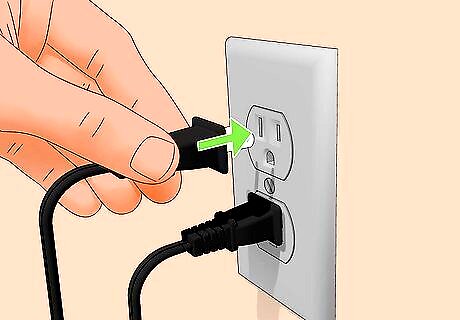
Connect the second monitor to a power source. Plug your monitor's power cable into an electrical outlet, such as a wall socket or a surge protector.
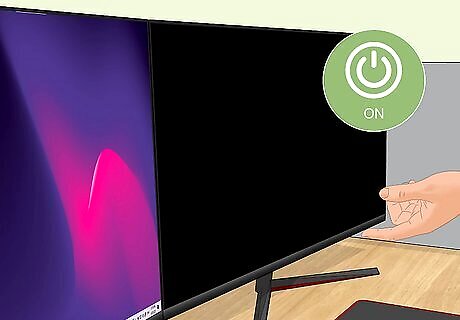
Turn on the second monitor. Press the "Power" button on the second monitor to make sure that it is turned on and ready to receive the signal from your computer's main monitor. You can now proceed with setting your monitor's display preferences on Windows or Mac. EXPERT TIP Chiara Corsaro Chiara Corsaro Phone & Computer Repair Technician Chiara Corsaro is the General Manager and Apple Certified Mac & iOS Technician for macVolks, Inc., an Apple Authorized Service Provider located in the San Francisco Bay Area. macVolks, Inc. was founded in 1990, is accredited by the Better Business Bureau (BBB) with an A+ rating, and is part of the Apple Consultants Network (ACN). Chiara Corsaro Chiara Corsaro Phone & Computer Repair Technician In most cases, this is all you'll need to do. Typically, you just have to plug in your second monitor and turn it on, and your dual-screen will automatically show up. However, if you want to make any adjustments, you'll just go into your 'System Preference' under 'Display Settings' to change how it's set up.
Setting Display Preferences on Windows
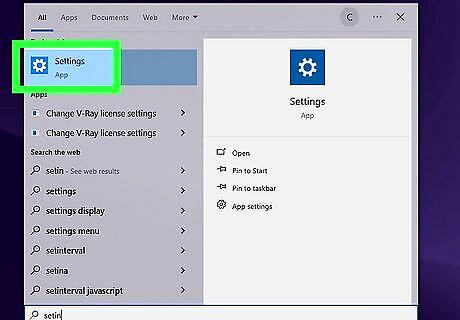
Open your Windows settings Windows Settings. Click the gear-shaped icon on the lower-left side of the Start window to open the Settings menu on Windows 10 and Windows 11.

Click System. It's a computer monitor-shaped icon in the Settings window. For Windows 11, this will be in the left menu.
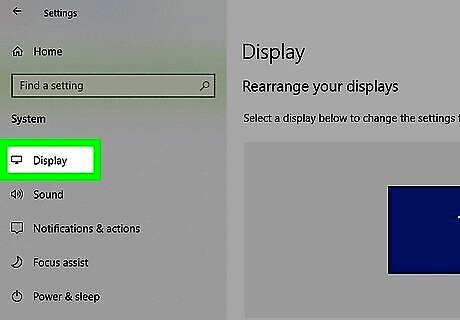
Click Display. If you're using Windows 10, It's the first option in the panel to the left in the Windows System menu. On Windows 11, it's at the top of the right panel. If you're using Windows 11, you should now see an illustration of your connected monitors at the top of the screen. Your main monitor is labeled 1, while the secondary is labeled 2.
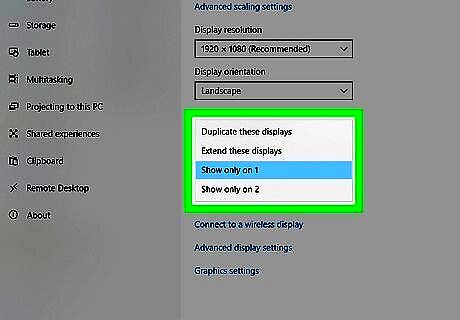
Select a display option. If you're using Windows 11, chose an option from the menu below the bottom-right corner of monitors 1 and 2. On Windows 10, scroll down to the "Multiple displays" section, click the "Multiple displays" menu, and then choose an option. Here are your options: Extend these displays (recommended) — Uses the second monitor as an extension of your first monitor. Duplicate these displays — Displays the first monitor's contents on the second monitor. Show only on 1 — Shows content only on the first monitor. Show only on 2 — Shows content only on the second monitor. After selecting one, your screens will change to preview your changes.
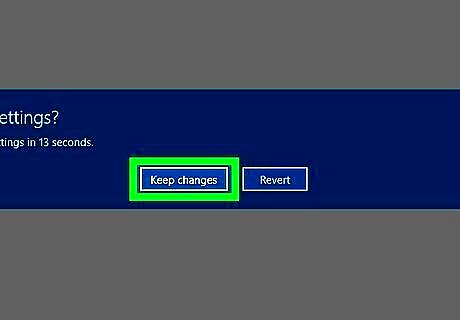
Click Keep changes when prompted. Doing so will apply your display settings. For example, you'll see your desktop split between the first and second monitors if you choose to extend your desktop.
Setting Display Preferences on Mac

Open the Apple menu Mac Apple. Click the Apple logo in the top-left corner of the screen. A drop-down menu will appear.
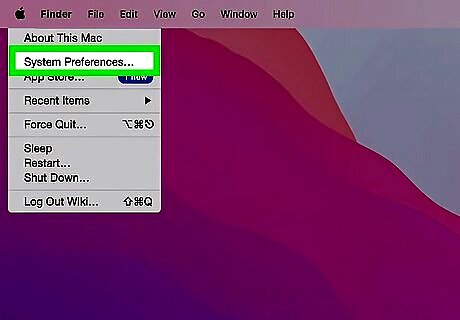
Click System Settings. It's near the top of the Apple drop-down menu. If you're using an older version of macOS, you'll see System Preferences instead.

Click Displays. It's an option in the panel on the left side of the window. If you're using macOS Monterey or older, it'll be towards the top of the window.
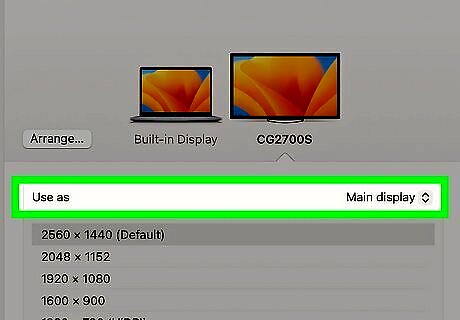
Select your main display. Click a display to change it's settings, then select Main display from the "Use as" dropdown. If you're using macOS Monterey or older, make sure you're in the arrangement tab. You'll also see a light transparent bar on the image that's marked as your main display. You can drag it to the other monitor to make that your main display.
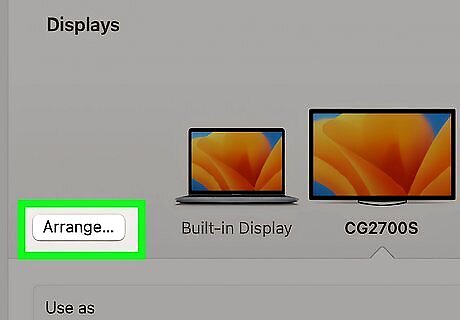
Arrange your monitors. You'll see an image depicting your screens, like the built-in display of a laptop and an external monitor. If you have macOS Ventura or newer, click Arrange. You can click and drag a monitor to move it so the image on-screen is similar to your set-up. For macOS Monterey or older, uncheck the "Mirror Displays" box. If you want to extend your desktop using the second monitor, make sure that the "Mirror Displays" checkbox is unchecked. macOS Ventura can select the "Mirror Displays" option in the "Use as" drop-down menu.
Setting Display Preferences in Ubuntu Linux
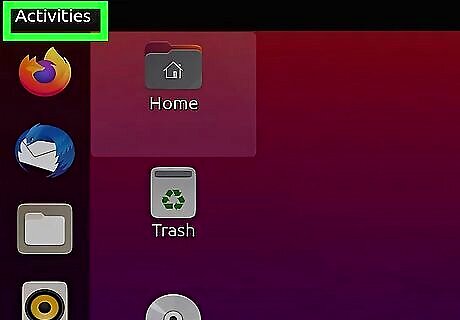
Click Activities. It's in the upper-left corner of the screen. This displays a search bar you can use to search for apps on your system. Alternatively, you can click the icon that resembles an arrow pointing down (⏷} in the upper-right corner. Then click the icon that resembles tools to open the Settings menu.
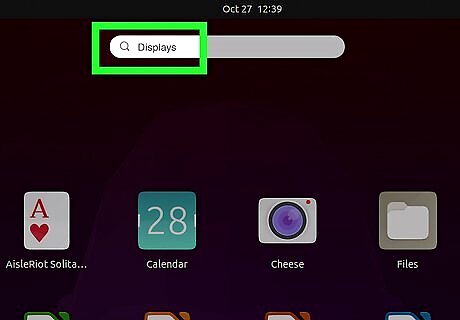
Type Displays in the search bar. This displays all apps and settings related to displays. If you are using the settings menu, you can click the magnifying glass icon in the upper-left corner to display the search bar.

Click Displays. It's next to an icon that resembles a computer monitor in the Settings menu. To get to this option in the Setting menu, click Devices. Then click Displays.
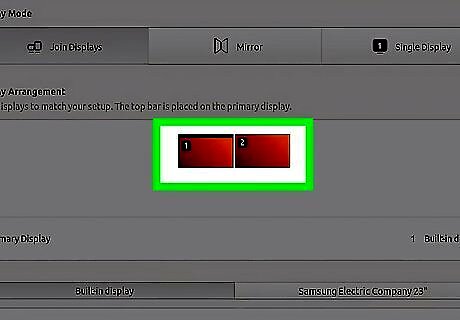
Click and drag to arrange the monitors. Click and drag the monitors in the Displays panel to the position you have set up on your desk. Each display in the Displays panel is numbered. The corresponding number is shown in the top-left corner of each display when the Displays panel is open.
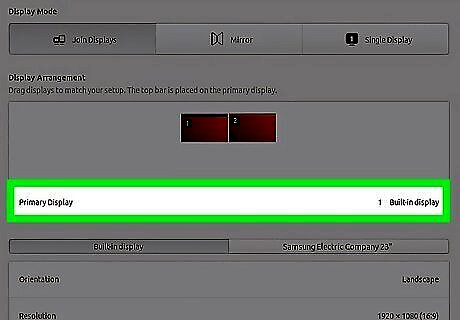
Click the monitor you want to use as the primary display. The primary display is the one that contains the top bar and the "Activities" overview. Click whichever monitor you want to use as your primary display.
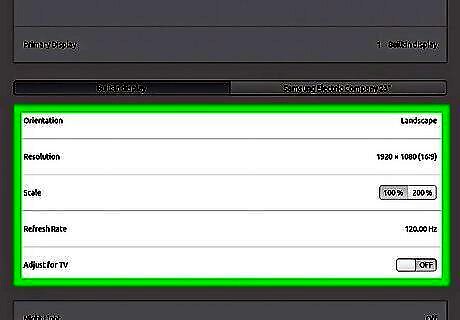
Select the orientation, resolution, and refresh rate. If you need to adjust the orientation, resolution, or refresh rate, click Orientation, Resolution, or Refresh rate and pick an option from the menu. Orientation: For orientation, you can select "Landscape" (widescreen) or "Portrait" (tall screen) facing left or right. Or you can select "Landscape flipped." Resolution: Select the resolution that best suits your monitors. Older VGA monitors may only be able to support 800 x 600. Older widescreen monitors may support 1920 x 1080 (HD). Newer monitors may support 3840 x 2160 (4K) or higher. Refresh rate: This affects how fast the image refreshes. Most monitors should be able to support 60 Hz (60 frames per second). Some monitors may support 120 Hz (120 frames per second) or higher.

Click Apply. It's the blue button in the upper-right corner. This applies the changes you made. You will need to confirm the new settings within 20 seconds or the old settings will revert.
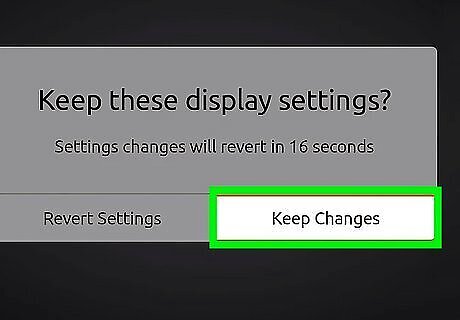
Click Keep Changes. This confirms that you want to keep the changes as they are. If you want to revert to the old settings, click Revert Settings or wait 20 seconds.



















Comments
0 comment